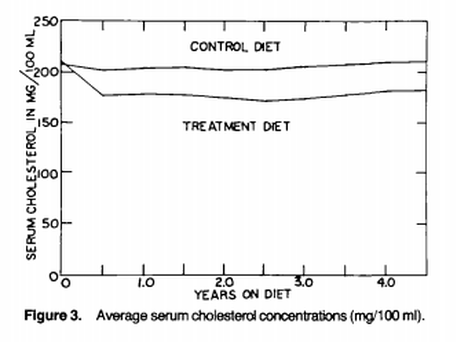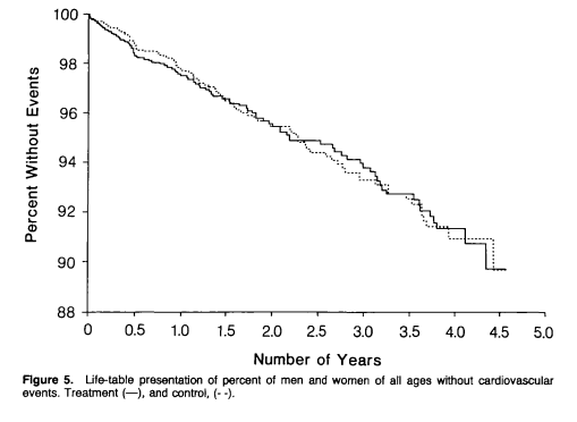In the 1960s and 70s, mental institutions offered dietary researchers an excellent opportunity to test various diets in a highly controlled setting for a long duration. At the time, long term mental hospital stays were common, and researchers used this to their advantage. This opportunity was famously utilized three separate times, in Los Angeles, Helsinki, and Minnesota. In each city, researchers tested the long term effects of eating a low saturated fat diet, and how it may be related to developing cardiovascular disease. The last post discussed the pitfalls involved in blinding a diet study, and the Minnesota Coronary Survey is an example of quite the contrary.
This was a double-blind randomized control trial lasting 4.5 years in 6 Minnesota state mental hospitals and one nursing home involving 4,393 men and 4,664 women. It examined effects of a lipid lowering diet on heart disease. This was the largest study by far that tested the diet heart hypothesis, and they did so with arguably the most rigorous study design to date.
Each patient was randomly assigned to consume either the low saturated fat intervention diet (38% fat diet; 9% Saturated fat, 15% polyunsaturated fat, 14% monounsaturated, 166 mg cholesterol), or the control diet (39% fat diet; 18% saturated fat, 5% polyunsaturated fat, 16% monounsaturated fat, 446mg cholesterol). The difficult part then, is to create two different diets containing these macronutrient compositions that are not discernable by taste or smell. The next challenge is serving over 9,000 people their correct diet for years, based on which group they were randomly assigned to. Here is how they did it:
"Both diets were served in a single line. As a participant entered the line, he or she was handed a label bearing his or her name and a code number that was incomprehensible to the uninitiated but easily interpreted by the foodservers to determine which diet was to be served...The label also enabled the food service worker to serve the proper tray without compromising the blind design, and the labels remaining on the sheet provided the basis for the daily tally of missed meals. Each month the hospital technicians transferred the missing meals data to a "Port-o-Punch card." These cards were read by the computer and at the end provided a correlation between adherence and cholesterol response"
To compliment the rigorous study design, the cholesterol levels of the patients can be used as an objective marker throughout the study to make sure everything is going as planned. Since we know from feeding studies that when you replace saturated fats with polyunsaturated fats, total cholesterol levels decrease, researchers can use this phenomenon to measure adherence. Here is a graph of the cholesterol levels of the study subjects over the course of 4+ years on their respective diets:
After 4.5 years, no reduction in cardiovascular events or total deaths from the treatment diet. In fact there was a non-significant trend towards a benefit to a high saturated fat diet:
Although the trial laster 4.5 years, not everyone consumed the diet that long. The main criticism of this study was the average length of time on the diet, which was 384 days. However, the number of person years observed was 9,538, with 5,903 of these years continuously for more than 2 years and 2,495 for more than 4 years.
The authors waited about 16 years before publishing this data. According to Gary Taubes in Good Calories, Bad Calories, when he asked Dr. Frantz, the principal investigator, why they waited so long to publish the study, he explained in an interview: "We were just disappointed in the way it came out."
---
Tried a paleo or carbohydrate-restricted diet? Join the registry today and contribute to a better understanding of this way of eating.


 RSS Feed
RSS Feed
